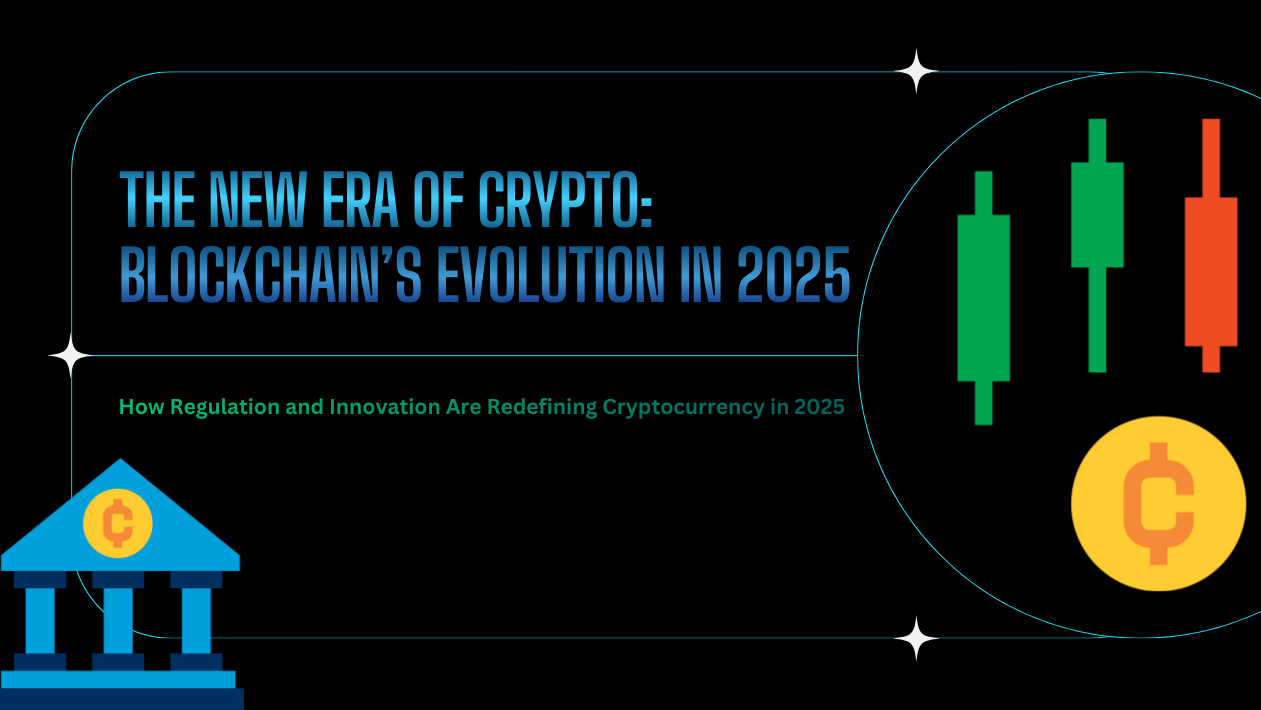The blockchain and cryptocurrency ecosystem has entered a phase of mature growth in 2025, moving well beyond speculation to become a backbone of the global digital economy. With clearer regulations, enterprise adoption, and practical use cases, blockchain is powering everything from cross-border payments to supply chain transparency, while cryptocurrencies gain legitimacy as both investment assets and everyday payment options.
Global Regulations Bring Stability and Trust
After years of uncertainty, governments have introduced comprehensive policies to regulate crypto markets.
- The European Union’s MiCA framework is fully active, standardizing licensing and consumer protections across member states.
- The U.S. Digital Asset Clarity Act now defines crypto assets and stablecoins as regulated financial instruments.
- In Asia, Singapore, Japan, and India have created fast-track licensing regimes for exchanges and blockchain startups.
These developments have attracted institutional investors, encouraging pension funds, insurance companies, and major banks to allocate more capital to crypto portfolios.
Stablecoins and CBDCs Dominate Digital Payments
Stablecoins like USDC and EUROC are increasingly used for global remittances, payroll, and e-commerce, thanks to their low transaction fees and speed.
Meanwhile, Central Bank Digital Currencies (CBDCs) from China, the EU, and Brazil are enabling governments to modernize monetary policy and streamline welfare distribution.
Large retailers and payment providers now accept stablecoins as readily as traditional credit cards.
DeFi 2.0: Secure, Compliant, and Enterprise-Friendly
The decentralized finance sector has evolved into DeFi 2.0, emphasizing security, interoperability, and compliance.
- On-chain credit scoring and audited smart contracts have reduced hacking incidents.
- Hybrid platforms now allow traditional banks to offer blockchain-based lending and trading while meeting regulatory requirements.
Institutional DeFi products—such as tokenized bonds and automated yield platforms—are seeing record inflows.
Tokenization of Real-World Assets Takes Center Stage
Tokenization of assets like real estate, private equity, carbon credits, and fine art is one of the fastest-growing blockchain use cases.
Analysts project the tokenized asset market could exceed $12 trillion by 2030, allowing fractional ownership and 24/7 trading of traditionally illiquid assets.
Enterprise Blockchain Beyond Finance
Businesses are deploying blockchain to secure supply chains, verify digital identities, and streamline logistics.
Healthcare providers use it for tamper-proof patient records, while luxury brands authenticate goods with NFT-based certificates.
Market Outlook: Sustainable Growth Over Speculation
While Bitcoin and Ethereum remain market leaders, attention has shifted from short-term trading to long-term value creation. The 2025 crypto market shows steady, sustainable growth, supported by real-world applications and mainstream financial integration.





